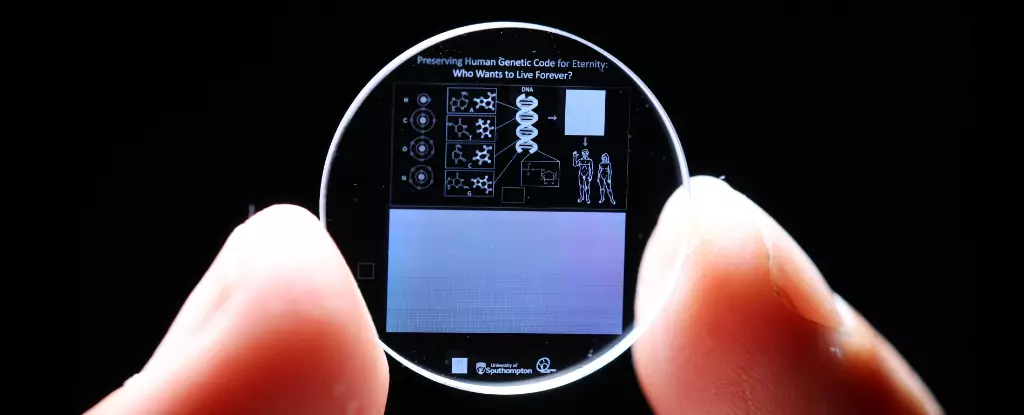The inevitability of time presents a profound thought experiment for humanity—what happens to our legacy once the Earth is no longer hospitable? Researchers at the University of Southampton have taken a significant leap forward in the realm of data storage that could answer this question. Their innovation, the five-dimensional (5D) memory crystal, serves as a promising vessel for storing not only data but also elements of our very existence. Remarkably, their latest achievement sees the complete modern human genome etched into these crystals. This technology, though not entirely novel, is a testament to human ingenuity and resilience in the face of existential uncertainties.
The fundamentals of this technology revolve around the utilization of femtosecond laser pulses to manipulate nanoscale structures within silica, or silicon dioxide. By creating tiny voids in the glassy medium, engineers can encode data with precision. Each void’s location, size, and orientation contributes to the five dimensions of data storage. With the capability of housing terabytes of information, these memory crystals outshine traditional data storage methods in both durability and capacity. Unlike magnetic tapes or compact discs that deteriorate over time, the silica-based configurations are expected to remain stable even under extreme conditions—shocking that they can withstand extreme heat and pressure without losing encoded information.
In collaboration with Helixwork Technologies, researchers successfully incorporated a sequence that represents the full human genome—an impressive 3 billion letters encoding the essence of our species—into a single crystal. This equates to roughly 800 megabytes of data captured eternally in a robust medium. Now safely stored in the Memory of Mankind’s archive in Austria, this disc contributes to a growing collection of knowledge that may be vital for future civilizations or entities who stumble upon it. The potential for future intelligence to decode and perhaps resurrect human genetic material, while speculative, prompts intriguing discussions about the purposes of such record-keeping endeavors.
Peter Kazansky, the team leader, points out that the idea is not as far-fetched as it may initially seem. Existing scientific techniques already allow for the synthesis of genetic material from simpler organisms and reintroduction into living cells. The 5D memory crystal therefore represents not just a record, but a possible pathway toward reviving complex life forms, including Homo sapiens, if future advancements in science permit such a feat.
The current landscape of data generation is staggering. With humanity generating approximately 64 zettabytes of data in 2020 and projections suggesting nearly 150 zettabytes by 2024, the challenge of data preservation is more pressing than ever. As we fill the digital universe with everything from entertainment to essential global communications, the need for efficient, cost-effective, and durable storage solutions becomes paramount.
5D memory crystals offer a gleaming prospect for this overwhelming data mass. The capability to store vast amounts of information in a compact form means that our current digital creations, from social media posts to scientific breakthroughs, could have the longevity that traditional storage methods lack. In an era defined by rapid data proliferation and environmental uncertainty, advancements like these could stand as guardians of human knowledge, potentially waiting for eons until they are rediscovered.
Speculative Futures and the Ethics of Resurrection
Delving deeper into the implications of preserving our genetic material raises ethical questions as well. If a future civilization manifests, capable of reading and interpreting this intricate information, what responsibilities come with such power? Would they consider it their duty to resurrect humans or other lost species? The moral implications of cloning and the potential consequences for ecosystems are significant and must be carefully contemplated.
The project spearheaded by the University of Southampton is an ambitious endeavor that reflects both human creativity and a deep-seated desire to endure beyond our physical form. As we embrace technology that could protect our essence from the ravages of time and oblivion, it is vital to consider not only the mechanics of such advancements but also the potential repercussions. The memory crystal may serve as a marvel of our time, emboldened by the hope that the legacy of humankind, in some way or another, will continue—long after the oceans have evaporated, and life on Earth has dissipated into the cosmic void.


Leave a Reply